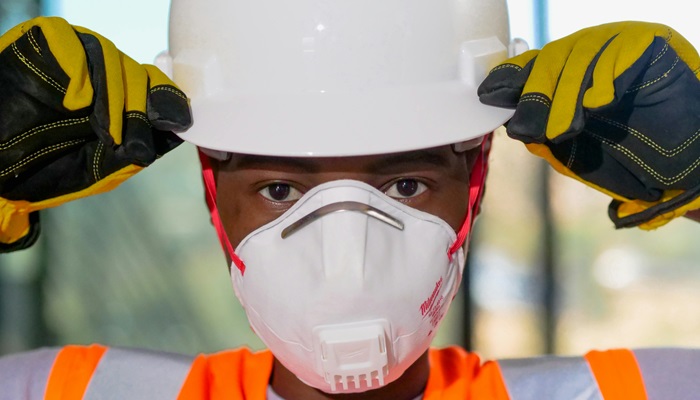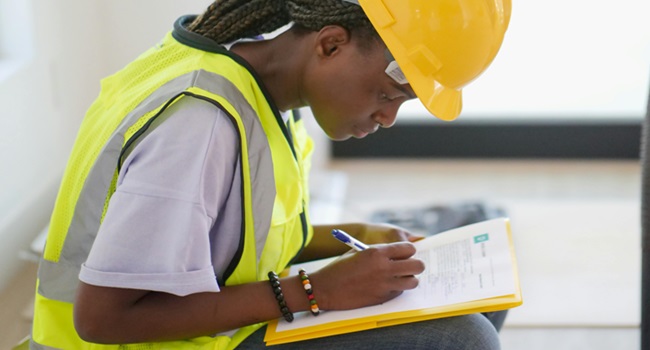Staying Legally Compliant: Health and Safety Advice for the Construction Sector
In the construction industry, ensuring the safety and well-being of workers is paramount. This blog post aims to explore how adherence to health and safety regulations not only safeguards employees but also mitigates the risk of legal repercussions. With stringent guidelines in place, it is crucial for contractors, site managers, and business owners to remain […] The post Staying Legally Compliant: Health and Safety Advice for the Construction Sector appeared first on World Construction Today.

In the construction industry, ensuring the safety and well-being of workers is paramount. This blog post aims to explore how adherence to health and safety regulations not only safeguards employees but also mitigates the risk of legal repercussions.
With stringent guidelines in place, it is crucial for contractors, site managers, and business owners to remain informed and compliant. For comprehensive health and safety advice, staying updated with the latest regulations is essential.
Understanding Health and Safety Regulations
The construction sector is governed by a myriad of health and safety regulations designed to prevent accidents and ensure safe working environments. It is imperative to understand and implement these regulations to maintain compliance and protect your workforce.
The Importance of Risk Assessments
A thorough risk assessment is a fundamental component of health and safety compliance. By identifying potential hazards, you can devise strategies to control or eliminate risks, thereby creating a safer work environment.
- Identify hazards: Begin by examining the work site and the tasks involved to identify potential dangers.
- Evaluate risks: Determine the likelihood and severity of harm that these hazards might cause.
- Implement control measures: Introduce procedures or equipment to mitigate identified risks.
Regularly reviewing and updating risk assessments is just as vital, especially when project scope or work conditions change.
Training and Competence
Ensuring that your workforce is adequately trained and competent is another critical aspect of maintaining health and safety standards. Regular training sessions should be conducted to keep workers informed about the proper use of equipment, emergency procedures, and the latest safety protocols.
- Conduct regular safety training tailored to specific site needs.
- Ensure that all personnel are competent and confident in using machinery and equipment.
- Establish a culture of safety where employees feel responsible for their own well-being as well as that of their colleagues.
Providing access to safety resources and encouraging open communication can significantly enhance the safety culture within your organisation.
Implementing Safety Measures
Implementing effective safety measures is a proactive approach to accident prevention. Utilising personal protective equipment (PPE), maintaining equipment, and ensuring the site is well-organised are key elements.
For more detailed information on construction safety protocols, you can refer to the GOV.UK website.

Utilising Personal Protective Equipment (PPE)
Personal Protective Equipment (PPE) is a crucial component in safeguarding construction workers from potential hazards. Ensuring that all employees are equipped with the appropriate PPE, such as hard hats, gloves, safety goggles, and high-visibility clothing, can significantly reduce the risk of injury. It is essential to provide ongoing training on the correct use and maintenance of PPE to ensure its effectiveness.
- Conduct regular checks to ensure PPE is in good condition and replace any damaged items immediately.
- Make PPE readily accessible to all workers on site.
- Instil a culture where the use of PPE is seen as standard practice, not an optional extra.
The consistent use of PPE not only protects individual workers but also demonstrates a company’s commitment to maintaining high safety standards.
Site Organisation and Maintenance
Effective site organisation plays a vital role in preventing accidents and maintaining a safe working environment. Clear signage, designated walkways, and organised storage areas can all contribute to reducing hazards. Regular maintenance of equipment and machinery is equally important to ensure they remain in safe working condition.
Key steps to enhance site safety through organisation include:
- Keeping the work area tidy and free from unnecessary clutter.
- Ensuring materials and equipment are stored safely and not obstructing pathways.
- Implementing regular checks and inspections of tools and machinery.
Following these practices can help prevent common site accidents and foster a safe working environment for all personnel.
Emergency Preparedness and Response
Despite best efforts, emergencies can occur, and having a robust emergency response plan is crucial. Developing an emergency preparedness plan involves identifying potential emergency scenarios, establishing clear procedures, and ensuring all employees are familiar with them.
- Conduct regular emergency drills to ensure readiness.
- Designate and train a team of employees to manage emergency situations.
- Ensure all workers know the location of emergency exits and equipment such as fire extinguishers and first aid kits.
With these measures in place, your team will be better prepared to respond swiftly and effectively in case of an emergency.
Key Takeaways
Maintaining legal compliance in the construction sector requires a thorough understanding of health and safety regulations and a commitment to implementing robust safety measures. Regular risk assessments, ongoing training, effective use of PPE, and well-organised site operations are essential components of a comprehensive safety strategy.
By fostering a culture of safety and preparedness, you can significantly reduce the risk of accidents, ensuring a safe and productive working environment for all employees. Staying informed and proactive will help you navigate the complexities of health and safety compliance while safeguarding the well-being of your workforce.
Please be advised this article is for informational purposes only and should not be used as a substitute for advice from a trained legal professional. Please seek the advice of a legal professional if you’re facing issues regarding implementing health and safety measures in your construction site.
The post Staying Legally Compliant: Health and Safety Advice for the Construction Sector appeared first on World Construction Today.

 machineryasia
machineryasia 






